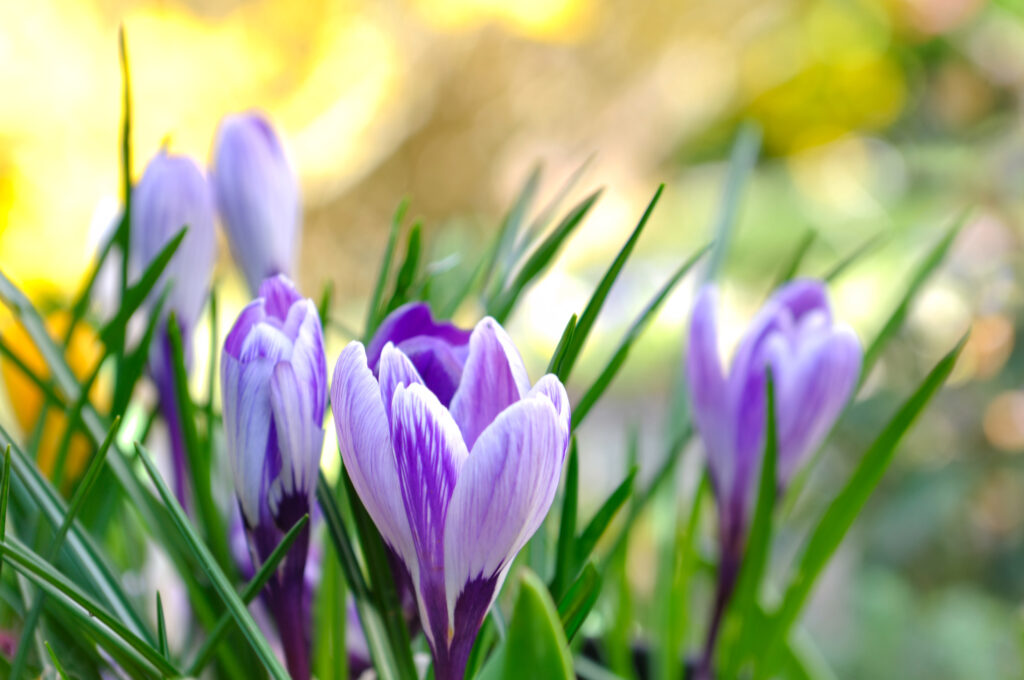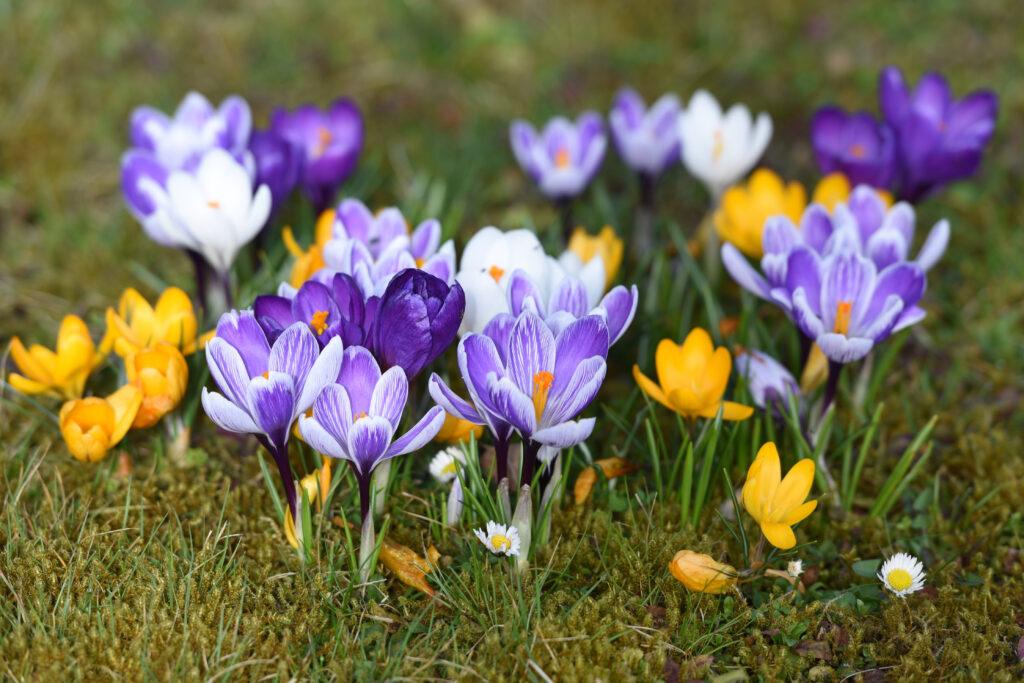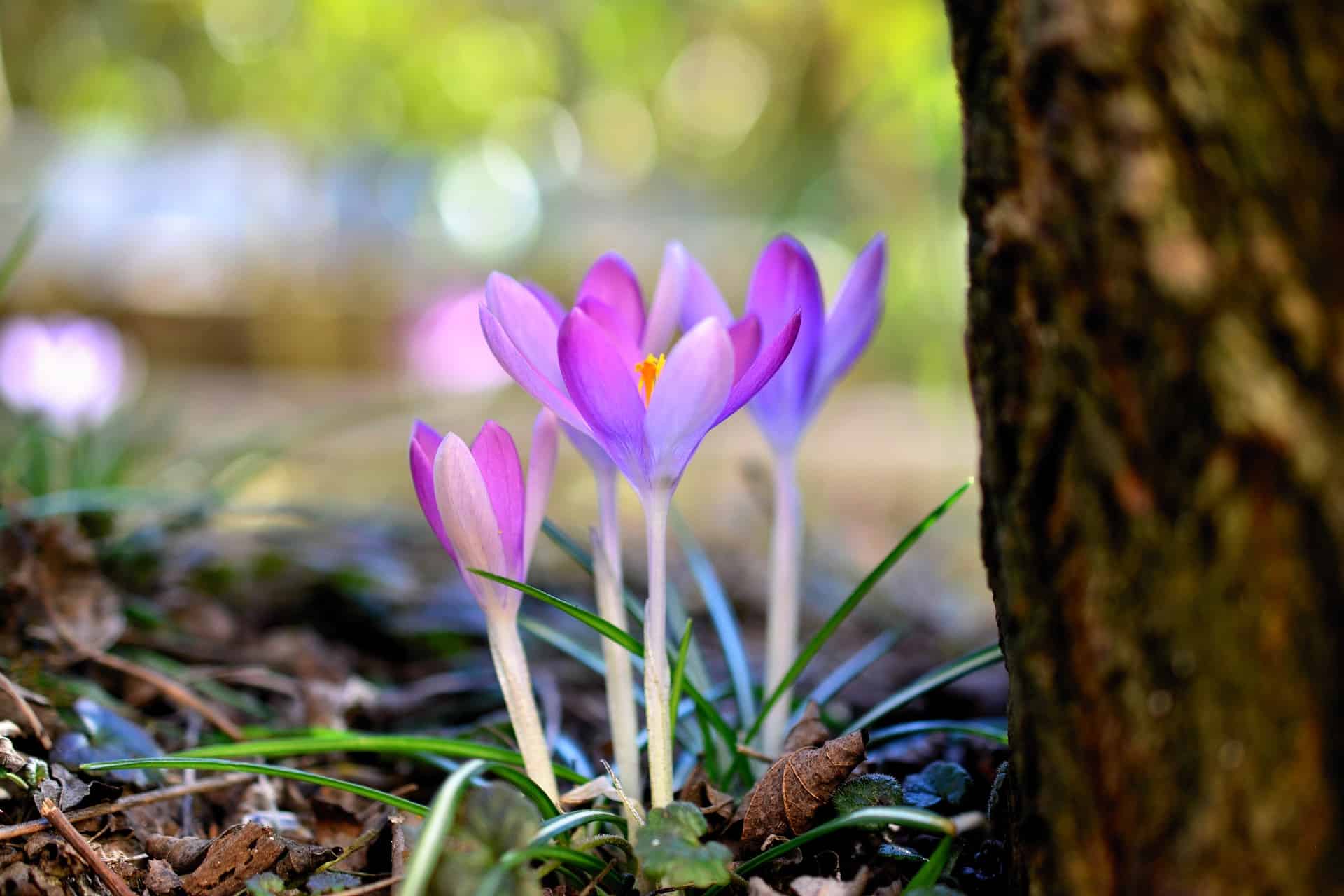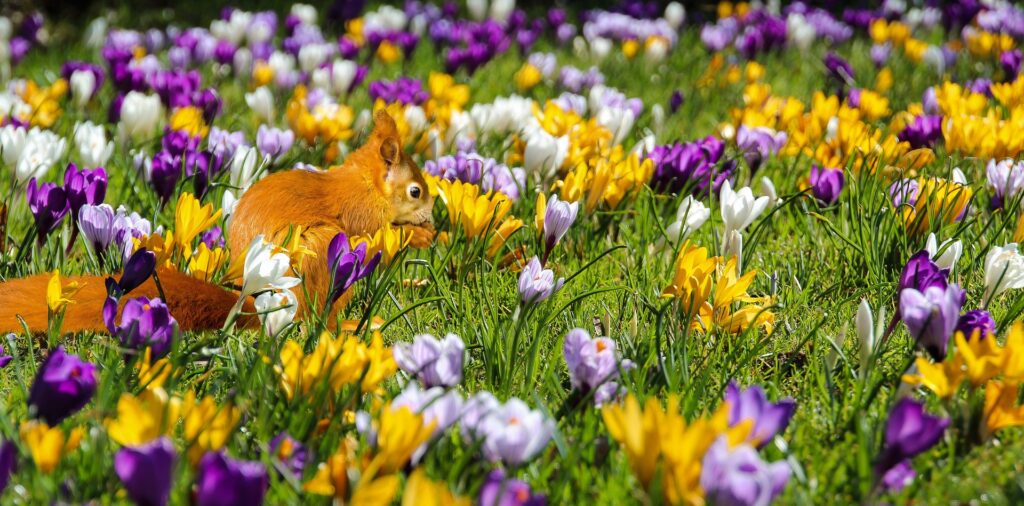Crocus is one of the earliest flowering plants that signals the arrival of spring. It is essential to plant the bulbs at the right time to enjoy their vibrant colors. This article will discuss how to plant crocus bulbs to ensure a beautiful and healthy garden.
Understanding Crocus Bulbs

Crocuses offer a big burst of color when they break through the winter when snow is on the ground.
©iStock.com/Olga U
Each spring, crocuses are among the very first flowers to blossom.
Its pretty flowers will frequently bloom while snow is still on the surface in cold areas. They display different colors: purple, yellow, lavender, cream, white, and more!
If left unbothered, these bulbs will grow and produce more flowers yearly. Several of them also have a powerful scent that tempts bees to leave their hives in February or March, giving the pollinators a crucial early-spring food source. Read on to discover the ideal conditions and when to plant crocus bulbs.
Appropriate Conditions for When You Plant Crocus Bulbs

The crocus flower can reach 8 to 12 inches high.
©sanddebeautheil/Shutterstock.com
There are three main factors you should consider when planting crocus bulbs:
Location: Crocus bulbs, commonly called corms, can be planted in either full or partial shade. Ideally, you should put the bulbs near trees that can provide them with a cool environment protected from the sun.
Appropriate weather: Crocuses can withstand the winter in freezing zones. Like many other spring-blooming flowers, they require a cold winter to thrive. This implies temperatures at or below 45°F for at least ten weeks.
Soil Conditions: Crocus should be planted in well-drained soil like other spring-blooming bulbs. Keep in mind that the bulbs could decay and rot in wet ground.
When to Plant Crocus Bulbs

Fall is the answer as to when to plant crocus bulbs.
©Spitzi-Foto/Shutterstock.com
Plant crocuses in the fall for spring flowers since they require a period of cold weather to bloom.
Except for the heavy shade on the north side of buildings and beneath thickets, crocus corms can be planted in almost any place before the ground freezes during fall.
Ideally, you should plant crocus corms 6–8 weeks before a heavy frost is predicted and while the soil temperature is below 60°F. This often occurs in the northern U.S. and Canada in September or October and in the southern U.S. in October or November.
Where To Grow Crocus
Crocus bulbs are small and simple to nestle into flower beds in perennial gardens.
Place them close to the front edge, so they are easily seen. Plant crocus together with other spring-blooming bulbs like tulips, daffodils, muscari, and hyacinths to create your dreamt garden. After blooming, their foliage will swiftly disappear, making space for other plants.
Crocuses also flourish in gravel gardens and gaps between rocks. They will bloom earlier with sufficient drainage and warmth from surrounding stones. Additionally, these flowers are ideal for walkways. Enjoy the delicate petals of crocus bulbs that you plant close to the edge of a footpath or set of steps every spring.
Another option is to plant crocuses on the lawn or next to trees and plants as part of the landscape. However, not all lawns are suited for crocuses, and not all crocuses will thrive there. They are more likely to bloom in partially shaded lawns or areas shaded by trees.
How To Plant Crocus Bulbs

Crocuses can flourish in most soils, provided it’s loose and well-drained.
©
As we mentioned, crocus bulbs should be planted in the fall, after the temperature has cooled, and before the ground has frozen. After receiving them, wait a month to plant them to get the greatest results.
Fortunately, crocus are not picky about where they grow and will thrive practically everywhere. They can even blossom in sandy and clay soils. However, we recommend you use loose, well-drained soil, where they grow best.
These plants look better when planted in groupings of three to nine bulbs. Plant them 3″ apart in the center and 3″ deep. Plant them with their pointed tip upward. Try not to get impatient once you’re done planting — it takes around four months for the flowers to bloom.
Recommended Varieties
Below is a list of crocus bulb varieties we recommend and their descriptions. However, any crocus will look fantastic — but taking note of each variety’s color will take you one step closer to your dreamt garden.
- Early in the spring, “Bowles White” blooms with white flowers that have vibrant golden yellow throats. It reaches a height of 2 to 3 inches.
- From spring until early summer, “Flower Record” blooms with pale violet flowers. It reaches a height of 4 to 5 inches.
- The striped crocus “Pickwick” has bases alternating between light and dark lilac and dark purple. It grows to a height of 4 to 5 inches and blooms from spring to early summer.
- The “Tricolor Crocus” is stunning. Three distinct lilac, white, and golden yellow bands can be seen on each slender blossom. It blooms in late winter and early spring and reaches a height of 3 inches.
Tips
Here is some extra advice to brighten up your garden with some fantastic-looking crocus:
- Water well after planting, but make sure you don’t drown the bulb.
- Put bulbs in groups or clusters instead of in a single line along a sidewalk or border, as individual blooms tend to become lost in the landscape.
- Crocuses can form carpets on lawns and meadows or be clustered in front of flower beds along the edge.
- For color contrast, plant taller spring-flowering bulbs and shrubs behind the early bulbs.
- If you have a dog, keep it away from the bulbs. Crocus are known to be very toxic for dogs.
- Bulky crocus bulbs that receive warmth and sunlight are ideal for dividing and recycling because they can grow larger over time. Wait around six weeks after flowering to dig up, divide, and transplant your corms if you wish to reuse them.
- Crocus can be grown in pots both inside and outside! However, you should choose well-draining containers and set them in a location with either full sun or partial shade.
Caring for Crocus Bulbs

Caring for your crocus bulbs is easy.
©
Here are some useful tips to take care of your crocus bulbs after they have passed their initial developing stage. Don’t worry! These are not hard flowers to keep.
How to Maintain Healthy Crocus Plants
Once they have stopped blooming, there is no need to remove wasted blossoms from crocus bulbs because they will soon fade away. Just allow the foliage to continue to grow, and the leaves will have yellowed after a few weeks. Then, you can let them dry and disappear or gently remove the leaf from the bulb.
If you put crocus bulbs in your lawn, wait until the bulb greenery begins to wither before mowing. This gives the bulbs enough time to store energy for next year’s blossoms.
Large crocus clusters may get overcrowded and yield fewer flowers over time. If this occurs, dig up the bulbs as soon as they finish flowering, so you still know where they are. Split the clumps into smaller clusters before replanting, leaving plenty of space between each bulb cluster. Finally, put extra bulbs in different locations taking into account the advisable space to be left between them.
Fertilizer, Water, and Mulch
If your spring is short and the days get hot quickly, apply a balanced fertilizer in early autumn. In contrast, if your spring is long and temperate, apply fertilizer after bulbs flower in late winter. The extra nutrients will allow the crocus to create larger carbohydrate storage.
As the weather becomes dry over the autumn, make sure to water the crocus beds, but avoid sopping the soil. Before winter arrives, mulch the beds. Remove thick mulch from crocuses and snowdrops in late February to allow the shoots to emerge. To offer protection from frost in the late season, leave a thin layer of leaves.
Protect Them From Pests
Even though early small crocus corms are rarely bothered by deer or rabbits, the already-grown plant could be eaten by mice, voles, and squirrels. Consider growing crocuses in buried wire cages if they are a nuisance.
Apart from that, birds may eat the blossoms. Also, you must be careful with how much water you provide these plants and their location. Crocus bulbs in storage will likely rot and mold if kept excessively moist.
Conclusion
You can have diverse colors in your garden in early spring by just planting crocus bulbs. We assure you that this is an easy and gratifying process. Crocuses blossom every spring, which is why they are said to be perennial. They are also excellent naturalizers, so there is a considerable probability that they will spread yearly. That means that you can have a stunning display of crocuses every year if you plant them at the right time and take care of them.
The photo featured at the top of this post is © sanddebeautheil/Shutterstock.com
FAQs (Frequently Asked Questions)
Thank you for reading! Have some feedback for us? Contact the AZ Animals editorial team.






